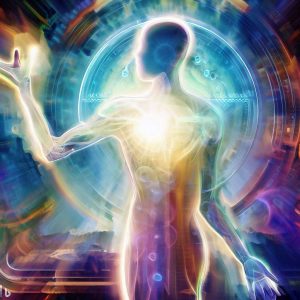Contents
Answering How do CNNs Work in Computer Vision?
In today’s digitally-driven world, filled with images and videos, the question of “How do CNNs work in computer vision?” becomes increasingly relevant. Computer vision has evolved into a transformative technology, with machines learning to process and interpret visual data in a way that mimics human vision. Convolutional Neural Networks (CNNs) stand at the core of this field, as specialized deep learning models that effectively manage the intricacies of image data.
CNNs stand out in the realm of computer vision for their proficiency in recognizing patterns that are imperceptible to the human eye. By simulating the way our brain processes visual information, CNNs can identify nuances and details within images, making them invaluable for tasks ranging from facial recognition to medical imaging analysis.
Their architecture, inspired by the organization of the animal visual cortex, allows CNNs to automatically and adaptively learn spatial hierarchies of features from image data. This is achieved through multiple layers of processing, which can filter and pool visual information, condense it, and ultimately classify it with remarkable accuracy.
The utility of CNNs in computer vision is profound. They power a myriad of applications, transforming the way we interact with technology, how we benefit from it, and opening up possibilities that were once the realm of science fiction. As we continue to advance in the field, CNNs serve as the pillars upon which the future of AI and automated visual interpretation is being built.
Understanding the Basics of CNNs
In the realm of artificial intelligence, CNNs are powerful tools that significantly enhance the capability of machines in interpreting visual data, a subfield known as computer vision. To understand how CNNs function, we need to delve into the basics of their underlying structure: Artificial Neural Networks (ANNs).
ANNs are computational models inspired by the human brain, designed to recognize patterns through a series of algorithms that mimic the way neurons signal each other. Imagine ANNs as a factory assembly line, where each worker (neuron) has a specific task, and the final product is the decision or prediction made by the network.
CNNs are a specialized kind of ANNs tailored for processing data that has a grid-like topology, such as images. What sets CNNs apart from their ANN counterparts is their ability to automatically detect the important features without any human supervision, a process ideally suited for image recognition tasks.
The architecture of a CNN is comprised of multiple layers that each play a unique role:
- Input Layer: This is the starting point where the image is inputted into the network in the form of pixel values.
- Convolutional Layer: Here lies the heart of a CNN. This layer performs a mathematical operation called convolution. Think of it as a flashlight moving over all the areas of the image. At each spot, the convolutional layer is looking to recognize small pieces of the image, such as edges or color blobs.
- Activation Function: After the convolution operation, the activation function, typically the ReLU (Rectified Linear Unit) function, introduces non-linearity into the network, allowing it to process more complex patterns.
- Pooling Layer: This layer simplifies the output by performing a down-sampling operation along the spatial dimensions (width, height), reducing the number of parameters, which in turn controls overfitting.
- Fully Connected Layer: The layers we discussed so far can identify features anywhere in the image. However, to make a final prediction (like identifying a face), we need to look at the global picture. The fully connected layer takes the high-level features identified by the previous layers and combines them to make a final classification.
- Output Layer: Finally, the output layer is where the CNN makes a decision about the image content, assigning it to a category, such as a ‘stop sign’ or ‘cat’.
Through this intricate process, CNNs can learn and interpret complex visual information, vastly improving computer vision systems’ accuracy and reliability. From powering facial recognition to assisting in medical diagnoses, CNNs are integral to the evolution of how machines understand and interact with the visual world around us.
The Role of Convolutional Layers
In the fascinating world of computer vision, CNNs are like skilled artisans who can carve out intricate details from images. At the core of their craftsmanship is the convolutional layer, a fundamental building block of these networks.
So, what is convolution in image processing? Picture a tiny magnifying glass gliding across an image. This glass represents a filter or kernel, a small matrix that focuses on one small area at a time. As it moves across the image, it performs a mathematical operation called convolution—multiplying its values by the original pixel values, summing them up, and creating a new, transformed image map. This process extracts critical features like edges, textures, or specific shapes from the image.
Filters are the artists’ tools in feature detection, designed to highlight various aspects of the image. Some might detect vertical lines, while others might pick out areas of intense color contrast. The choice and complexity of these filters can significantly influence how well a CNN can understand an image.
Stride refers to the steps the magnifying glass takes as it moves across the picture. A larger stride means it jumps further each time, leading to fewer focus points and a smaller feature map. Padding is like adding a border around the image, allowing the filter to operate even at the edges, ensuring that every pixel gets a chance to be in the spotlight.
By understanding these processes, we gain insight into how CNNs are able to see and interpret the world in a way that’s revolutionary for machines, and ever so useful for us humans.
Activation Functions in CNNs
CNNs rely on something called activation functions to transform their understanding of images from a straightforward to a complex one. These functions are the secret spice that adds non-linearity to the mix. Without them, CNNs would only be able to understand simple patterns and straight lines, much like only being able to read a book with one-syllable words.
Why is non-linearity so crucial? Because the visual world is complex and nuanced. Imagine trying to recognize a face based solely on straight edges — it wouldn’t work. Activation functions like ReLU (Rectified Linear Unit) or the sigmoid function allow CNNs to grasp these complexities by deciding which signals should proceed further into the network. ReLU, for instance, is like a gatekeeper, letting positive values pass while stopping negative ones, introducing non-linearity in a computationally efficient way.
These functions are indispensable in helping CNNs make sense of images, allowing them to recognize and react to the vast array of patterns and shapes they encounter.
Pooling: Simplifying Input Features
In the intricate process that Convolutional Neural Networks (CNNs) use to make sense of images, pooling stands out as a method of streamlining and simplifying the wealth of information they process. Think of pooling as a way of distilling a detailed image down to its essence, reducing its complexity while preserving vital features.
Pooling in CNNs is akin to looking at a forest and recognizing it by its overall shape, rather than by each individual leaf. This technique takes large sets of data and pools them into a smaller, more manageable form. Max pooling, for example, skims off the highest value in a cluster of pixels, capturing the most prominent feature. Average pooling, on the other hand, calculates the average of the values, providing a general sense of the area.
By employing pooling, CNNs efficiently reduce the computational load, ensuring that they remain focused on the most defining elements of the visual input, facilitating quicker and more effective image analysis.
Fully Connected Layers: From Features to Classifications
Fully connected layers play a crucial role in transforming observed features into final classifications. After the convolutional layers have done the heavy lifting of feature detection, and pooling layers have condensed these features into a more manageable form, the baton is passed to the fully connected layers.
Here, the processed data undergoes a transition. It is flattened, meaning it is turned from a two-dimensional array into a one-dimensional vector. This vector is a comprehensive list of all the features the CNN has detected in the image. The fully connected layers then act as a sort of decision-making panel, weighing up the features to decide what the image represents.
Through a network of neurons that are ‘fully connected’ to all activations in the previous layer, the features are interpreted, and the network makes a determination, classifying the image into categories such as ‘cat’, ‘dog’, or ‘car’. This process is the concluding step where CNNs apply learned patterns to make sense of new images, demonstrating the incredible way machines can be taught to see and understand our world.
Training CNNs for Computer Vision
Training CNNs for tasks in computer vision is a process that hinges on teaching the network to make correct predictions by adjusting its internal parameters. This learning is achieved through a method known as backpropagation. In essence, backpropagation is the backbone of CNN training, allowing the network to learn from its errors. When a CNN processes an image and makes a prediction, the result is compared to the known answer, and the difference between the two is calculated using a loss function. This function quantifies how far off the prediction is, providing a concrete goal for the network: to minimize this loss.
Optimizers are the algorithms that adjust the network’s internal settings, such as the weights and biases, to reduce the loss. Popular optimizers like Adam or Stochastic Gradient Descent tweak these settings in small steps, ideally leading to a better performance with each iteration.
Critical to the process is the quality and quantity of training data — the annotated images that the network uses to learn. These images must be labeled accurately for the network to understand what it’s looking at and to apply that understanding to new, unseen images. The annotations act as a guidebook, offering the CNN a roadmap to the vast and varied visual world it’s trying to interpret. Thus, a well-curated dataset is invaluable to the effective training of a CNN, ensuring that the network has a rich and accurate source of information from which to learn.
Applications of CNNs in Computer Vision
CNNs have become the cornerstone of numerous applications within the realm of computer vision, providing the technical foundation for machines to interpret and interact with the visual world in a multitude of ways. One of the primary uses of CNNs is image classification — the process by which a network categorizes images into predefined classes. Whether distinguishing cats from dogs or identifying the presence of diseases in medical scans, CNNs excel at assigning labels to images, making sense of vast datasets in a fraction of the time it would take humans.
Object detection takes this a step further by not only classifying objects within images but also pinpointing their precise location. This function is critical in scenarios such as surveillance, where identifying and locating objects or individuals in real-time can be essential. Meanwhile, image segmentation, another application of CNNs, involves partitioning an image into multiple segments to simplify or change the representation of an image into something that is more meaningful and easier to analyze. This technique is especially beneficial in fields like autonomous driving, where understanding the exact shape and size of road obstacles is crucial.
Advanced applications of CNNs are reshaping entire industries. In facial recognition, CNNs can identify individual faces among millions, enhancing security systems and personalized user experiences. Autonomous driving utilizes CNNs for not just detecting objects but also for making real-time decisions, navigating complex environments, and even predicting human behavior. These applications are just the tip of the iceberg. CNNs continue to drive innovation in computer vision, proving to be invaluable tools in a future where machines interpret visual data with increasing sophistication and autonomy.
Challenges and Limitations of CNNs
In the world of computer vision, CNNs are not without their challenges and limitations. One major hurdle is overfitting — a phenomenon where a CNN performs well on training data but fails to generalize to new, unseen data. It’s like acing every practice test but flunking the real exam because the questions are slightly different. To combat overfitting, techniques like dropout, where random neurons are ignored during training, and regularization, which penalizes complex models, are employed to ensure that CNNs can apply their learned patterns to broader contexts.
Another significant challenge is the computational requirements of CNNs. These networks demand substantial computing power for both training and inference, which can be a barrier for deployment on devices with limited processing capabilities or for applications requiring real-time analysis. This requirement for high-performance hardware has implications for both cost and energy consumption, posing a dilemma for widespread adoption.
Lastly, CNNs’ success is heavily dependent on the availability of large, annotated datasets. These datasets are necessary for training CNNs to recognize a wide variety of features and objects. However, compiling these vast datasets is time-consuming and resource-intensive. To enhance the diversity of training data, data augmentation techniques, such as rotating, zooming, or cropping images, are often used. These methods help improve the robustness of CNNs by simulating a wider array of possible scenarios they might encounter once deployed in the real world. Despite these challenges, the continued advancements in hardware and machine learning methodologies are helping to mitigate these limitations, making CNNs more accessible and effective for a variety of computer vision tasks.
The Future of CNNs in Computer Vision
As we look towards the horizon of computer vision, CNNs are poised for intriguing developments. With advances in CNN architectures like ResNet and Inception, these networks are growing deeper and more complex, capable of handling an increasing variety of tasks with greater accuracy. ResNet, for instance, introduced the revolutionary concept of “skip connections,” allowing training of networks that are substantially deeper than was previously possible. This depth is crucial for capturing the nuances of visual data.
Transfer learning has become a beacon of efficiency in this realm. Instead of starting from scratch, new CNN models can now build upon pre-trained networks, tweaking them (or “fine-tuning”) for specialized tasks. This method dramatically reduces the time and data needed to train robust models, making high-quality computer vision accessible even when resources are scarce.
Furthermore, CNNs are not operating in a vacuum. Their integration with other artificial intelligence technologies, such as Generative Adversarial Networks (GANs) and Recurrent Neural Networks (RNNs), is spawning innovative applications. GANs, for example, work with CNNs to generate and refine synthetic images, enhancing data augmentation and the realism of virtual environments. Meanwhile, RNNs contribute to making sense of video footage and sequences, where understanding context over time is key.
The future of CNNs in computer vision is an exciting amalgamation of advanced architectures, smarter training methods, and collaborative AI technologies, ensuring that the visual intelligence of machines will continue to advance in ways we are just beginning to imagine.
How do CNNs Work in Computer Vision? Answered
In conclusion, CNNs stand as a cornerstone in the field of computer vision, providing the framework for machines to interpret visual information with astonishing accuracy. These networks mimic the intricacy of human vision through layers that detect features, classify objects, and understand scenes. The impact of AI and CNNs stretches far beyond the borders of technology, influencing the very advancement of artificial intelligence and machine learning.
As CNNs become more sophisticated, they enable unprecedented applications and services, from facial recognition to autonomous driving. Their ability to learn from vast amounts of data has transformed industries, automating tasks that were once thought to require the nuance of human sight. Reflecting on the journey of CNNs, we witness a leap in our ability to process and utilize visual data, opening doors to innovations that continually reshape our interaction with technology and our understanding of the world through the digital eyes of machines.


